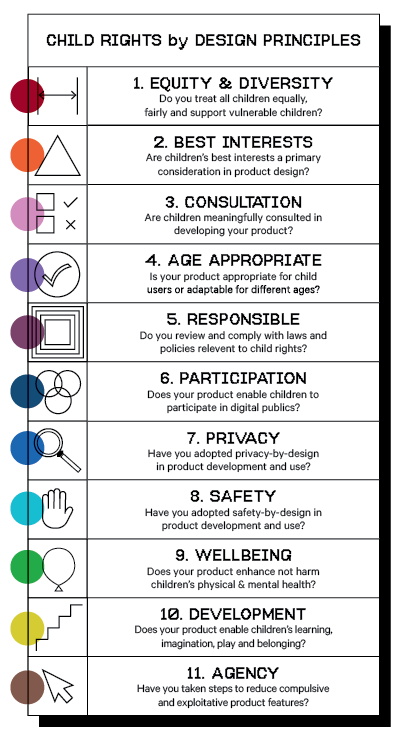Child Rights By Design
What is Child rights by design?
Digital technologies have become part of the infrastructure of children’s daily lives. During the COVID-19 pandemic they provided a lifeline for social interaction, education, play and participation. Not only is digital engagement no longer optional for children; it’s also now crucial to their development and prospects, and realisation of their human rights. So, it is timely for innovators to reflect on the possible impacts of their digital products and services on children and child rights; they must also find ways to design differently and better.
Child Rights by Design is a principled vision to inspire innovators to help realise children’s rights when designing digital products and services. It is grounded in the United Nations Convention on the Rights of the Child (UNCRC), the most widely ratified international human rights treaty ever, applicable to all children from birth to 18 years old. It builds specifically on the UN Committee on the Rights of the Child’s authoritative statement of how to implement the UNCRC in relation to the digital environment: General Comment No 25.
Below are the 11 Child Rights by Design principles. In this guidance, we explain the principles and match them with practical advice. Please put this page on your office wall, bookmark it in your tabs, or pin it to your design boards!


